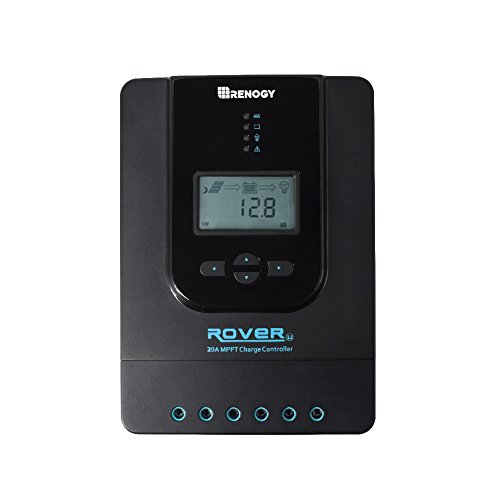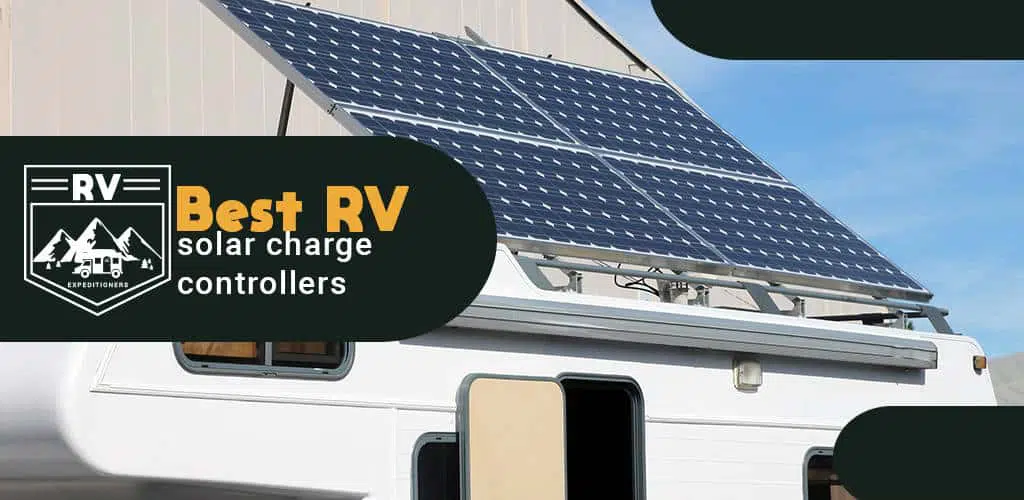There are many options for purchasing a quality solar charge controller, and it can be difficult to narrow down which ones are the best. Each product will be suitable for different needs, and it is important to know what you are looking for. The following are some of the best solar charge controllers on the market.
COMPARISON CHART
| IMAGE | PRODUCT | |
|---|---|---|
  | 1. ALLPOWERS 20A
| LEARN MORE ► |
 | 2. Renogy Rover 20A
| LEARN MORE ► |
 | 3. HQST 30A
| LEARN MORE ► |
 | 4. EPEVER MPPT 40A
| LEARN MORE ► |
 | 5. Victron Energy SmartSolar MPPT 100/30
| LEARN MORE ► |
OUR TOP 5 PICKS
#1 ALLPOWERS 20A

Specifications
-The ALLPOWERS 20A Solar Charger Controller Solar Panel Battery has an intelligent battery and a USB port display. |
-The Voltage runs at 12V and 24V and has an overcharge protection of 14.4V and 28.8V. |
-This controller weighs eight ounces, is available in black, green or blue and the manufacturer offers an 18 month warranty. |
Features
This PWM controller will save you a considerable amount of money in comparison to the more expensive MPPT controllers.
You will find it easy to operate, and it is an excellent choice if you need to power two batteries at once.
There are multiple electric protections in place including inverse connection, low voltage, overcharge, short-circuit and over-current.
The customizable aspect of the controller makes it a suitable choice for a variety of energy operations.
Pros
Cons
Video
#2 Renogy Rover 20A
Specifications
-The Renogy Rover 20A 12V/24V DC Input MPPT Charge Controller has an auto parameter adjustable LCD display |
-The voltage runs at 12V and 24V with a peak conversion efficiency of 98 percent. |
-The controller weighs about three pounds, is available in black and the manufacturer offers a one year warranty. |
Features
This MPPT controller is suitable for a wide variety of solar applications.
The protections against reverse polarity, overcharging, overload, reverse current, short-circuits and over-discharging will ensure a safe charging process.
It will be a great addition to your solar panel system, because the system will function without having to waste any energy.
Pros
Cons
Video
#3 HQST 30A
Specifications
The HQST 30 Amp 12V/24V PWM Common Positive Solar Charge Controller has an LCD display and a 5V 1A USB port. |
The voltage runs at 12V and 24V with a temperature compensation system. |
The controller weighs less than a pound, is available in black and the manufacturer offers a one year warranty. |
Features
This controller is multifunctional and uses intelligent technology to satisfy user needs.
There are built-in protections against overcharge, over-discharge, reverse-connection, short-circuit and overload.
The flexibility of this controller will allow you to use it for a variety of different load types.
Pros
Cons
#4 EPEVER MPPT 40A
Specifications
The EPEVER MPPT Solar Charge Controller 40A MaxInput Voltage 100V Negative Grounded Tracer 4210AN has a backlight LCD display and an MT-50 remote meter |
The voltage runs at 12V and 24V, and is an automatically identifying system voltage. |
The controller weighs five pounds, is available in black and the manufacturer offers a two year warranty. |
Features
This controller is suitable for larger solar panel energy systems, and it is capable of being synced to a computer.
The main draw to this controller is the amount of data about energy usage that it can provide for you.
This will make it easier for you to properly adjust the settings and ensure optimal energy efficiency.
Pros
Cons
Video
#5 Victron Energy SmartSolar MPPT 100/30
Specifications
The SmartSolar MPPT 100/30 Charge Controller by Victron Energy can be operated through bluetooth through an app called VictronConnect. |
The voltage runs at 12V and 24V and is designed to maximize energy harvesting. |
The controller weighs three pounds, is available in blue and the manufacturer offers a five year limited warranty. |
Features
This controller is a great option for larger solar panel energy systems, and is incredibly easy to monitor and control through the use of a personalized app.
The manufacturer offers a wide variety of accessories for the controller including wire boxes, data cables and much more.
A communication port can be utilized to expand the amount of solar panels that you can use.
Pros
Cons
Video
Buyer’s Guide
What is it?
A solar charge controller regulates the electric current and voltage that comes from solar panels to the batteries. This is useful for preventing overcharge and can protect you against overvoltage, which can pose a significant safety risk and degrade the integrity of the battery.
How does it work?
There are three stages to charging batteries that are called bulk, absorb and float.
The bulk stage is usually the first stage of charging when the generator turns on or the sun first comes out. This stage allows the solar panel to put as much amperage as it can into the battery.
The absorb stage is when the batteries reach the programmed absorb voltage. The batteries are kept at this voltage during this stage, and the amperage going into the battery reduces as the battery becomes full.
The float stage comes after the absorb stage, when the batteries reach a full charge. The charge controller will lower the voltage to a predetermined value, so it’s important to program everything properly.
What are the different types?
The two main types of solar charge controllers are PWM and MPPT. MPPT controllers typically harvest more energy than PWM controllers, but they tend to be more expensive. Many solar panel systems will only require a PWM controller, but MPPT controllers are an excellent choice for larger systems.
The high cost of MPPT controllers may be off putting to some consumers, but the high efficiency rate can actually end up saving you money in the long run. Solar panels tend to produce less power in colder temperatures, and MPPT controllers are capable of making up for this.
Pulse width modulation
The current is extracted from the panel just above the voltage of the battery with a PWM controller. This is typically the best option for low-cost, small energy operations where the efficiency of the system is not critical to the operation.
These devices tend to be much smaller than MPPT controllers, and are a great option for people that are trying to stick to a specific budget.
Why do you need this?
You will need a solar panel charge controller if you are powering your RV with solar panels. This will allow you to transfer the energy from the solar panel to a battery.
The primary draw to using a solar panel energy system is how affordable and efficient it is.
Do you need to use a trickle charger or battery tender?
A trickle charger charges a fully charged battery at a speed that is equivalent to its self-discharge rate. This is an excellent choice if you decide to use a PWM solar panel charge controller.
A battery tender transfers power into your battery over a period of time. This is a useful tool if you want to keep the battery operational during an extended period of inactivity.
Can I use multiple charge controllers?
Yes, multiple charge controllers can be used for the same battery. This is usually necessary when a charge controller is incapable of handling the power of a large array of solar panels.
CONCLUSION
While all of these solar charge controllers are viable options to use for your solar panel power system, the ALLPOWERS 20A Solar Charger Controller Solar Panel Battery stands out as the best choice.
The interface is incredibly user friendly, so people that are new to using solar energy will have an easier time with set up and continuous operation. You will have the ability to power two batteries at the same time using the dual USB ports.
The protections that are included in the device will ensure that you are generating and transferring power in a safe manner. This solar charge controller is the one of the best options on the market for powering an RV.







